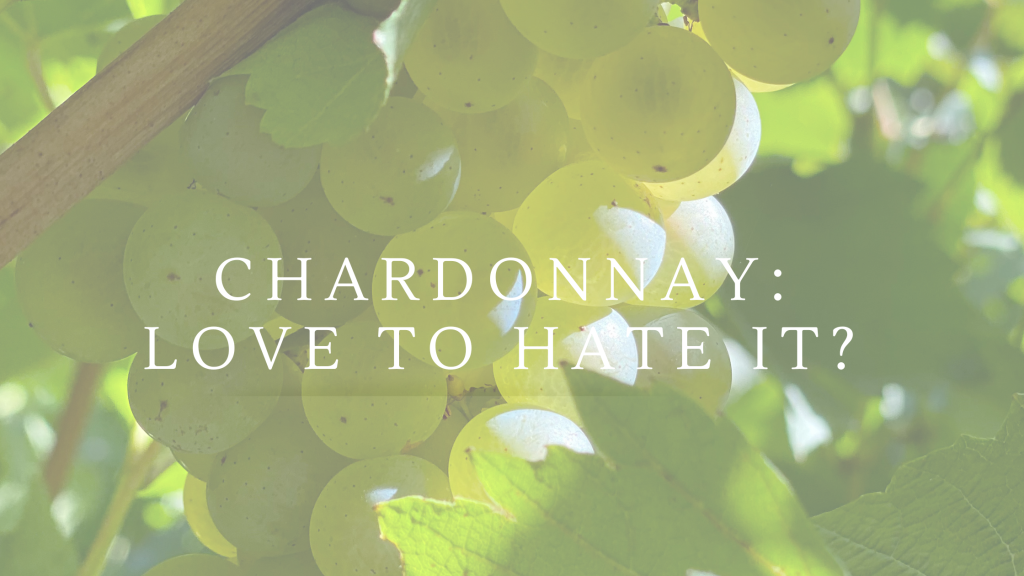Grown pretty much everywhere grapes are cultivated Chardonnay often evokes an intense response of love or hate in wine drinkers. It seems that there are people who always drink or ask for a Chardonnay and those who never do. However, whether you love it or hate it, it is a key player in the wine world.
Myself having Chardonnay grapes that were picked and processed this week, I have been thinking about how polarizing Chardonnay can be to some. It randomly came up in conversation with a wine tourist “I hate Chardonnay, but I love Champagne”, so let’s break down a little bit about Chardonnay and explore why people feel so much when it comes to one of the worlds most important grapes.
What is Chardonnay?
The grape: technically a neutral white grape, it takes most of its flavour profile from the area and conditions it is grown in (terrior) and the wine making styles used upon it. This adaptable grape creates wines with high alcohol, low acidity, and is generally a people pleasing wine.
Quite literally grown everywhere, Chardonnay is the worlds most expansive grape varietal. Its native home is in the Burgundy region of France. There, it is typically a medium bodied, rich, yet balanced wine with slight oak influences. Today you can find Chardonnay grapes pretty much anywhere grapes are grown, from New Zealand and Australia, to California, South America, throughout Europe and Canada.
What are the 3 main styles of Chardonnay?
Let’s break down the 3 predominate styles of Chardonnay: oaked, unoaked, and sparkling.
Oaked Chard offers a complex white wine full of vanilla, toasted nut, and baking flavours. It has probably fermented and undergone time in wood barrels which allows more oxygen into the process increasing complexity and changing the flavour profile. This type of Chardonnay also most likely goes under malolactic fermentation which offers particularly creamy and bready notes to the palette.
Unoaked Chard usually goes toward a more crisp wine, with citrusy or even tropical flavours. These wines are typically aged in vessels other than wood, such as steel or concrete.
Sparkling Chard can also be called a blanc-de-blanc (if pure Chardonnay) but it is also used in many sparkling blends allover the world under their particular regulations.
Champagne is clearly the most famous Chardonnay in the world. In Italy you can find Chardonnay grapes used in under sparkling names such as: Franciacorta DOC, Alta Langa DOC, Oltrepo Pavese Metodo Classico, and Trento DOC. While under the umbrella of permitted grapes to use under their laws, all of these important sparkling wines are dominated by Chardonnay grapes.
What’s up with Chardonnay in Italy?
Planted from North to South, all across Italy, Chardonnay dominates the white grape space, along with Glera (Prosecco grape), and Pinot Grigio. It is said to be best produced in the North, typically made in a light crisp, mineral based style, holding notes of citrus, apple, and pear. It is most known to be found across Trentino Alto-Adige, Veneto, Friuli-Venezia-Giulia, and Val d’Aosta, but as far south as Sicily as well. Many producers are now experimenting with malolactic fermentation, and reserve wood aging to get a more complex, fuller bodied Chardonnay. However, mostly Chardonnay is used in the sparkling wine industry.
So, why do people have such a visceral reaction to the idea of Chardonnay?
My first idea is most likely the idea of wood has ruined it for some people. Heavy, rich Chardonnays have dominated the shelf space in many North American countries for decades now. These can often hold a rich and intense oak flavour, made by use of wood barrels, but also liquid wood flavouring and wood chips to give many of the wood aromas and flavours. Personally, working with Chardonnay, I find it a balance of wine making styles, wood, and fermentation to allow the grape to shine based on its growing season. Having said that, perhaps the aggressive use of wood could be the reason people love or hate it.
Or, could peoples desire to dislike Chardonnay simply come from it having too many names? Is it just too much? Too complicated to find what you like?
You may find Chardonnay veiled under the names: Chablis, Pouilly-Fuissé, Gelber Weissburgunder. Or, under their respective sparkling categories such as Champagne, or TrentoDOC. You can also hear of Chardonnay described as “new world/old world”, “Burgundy”, or “California style”, these titles generally describe the wine making styles put into place (and mostly length of aging and techniques of oak used). All of these terms help you to understand style of wine making and the region, but I can understand that it just seems like Chardonnay has a lot to say about itself to some. Is it all too much?
My third idea is that wineries have become accustomed in many cases to try to replicate the same wines year after year. Without allowing for annual changes and a spectrum of expression from the vintage, wines are blended and covered up with products to make the exact same tasting wine year after year. By being open to trying different years, you may find you like a cold year over a hot year or vice versa.
Whether this article has confirmed why you hate it, or convinced you to try more (because you might find one you like), I do believe everyone could find a Chardonnay they enjoy. Give it another chance, or stay true to what you love, either way Chardonnay won’t be going anywhere.
